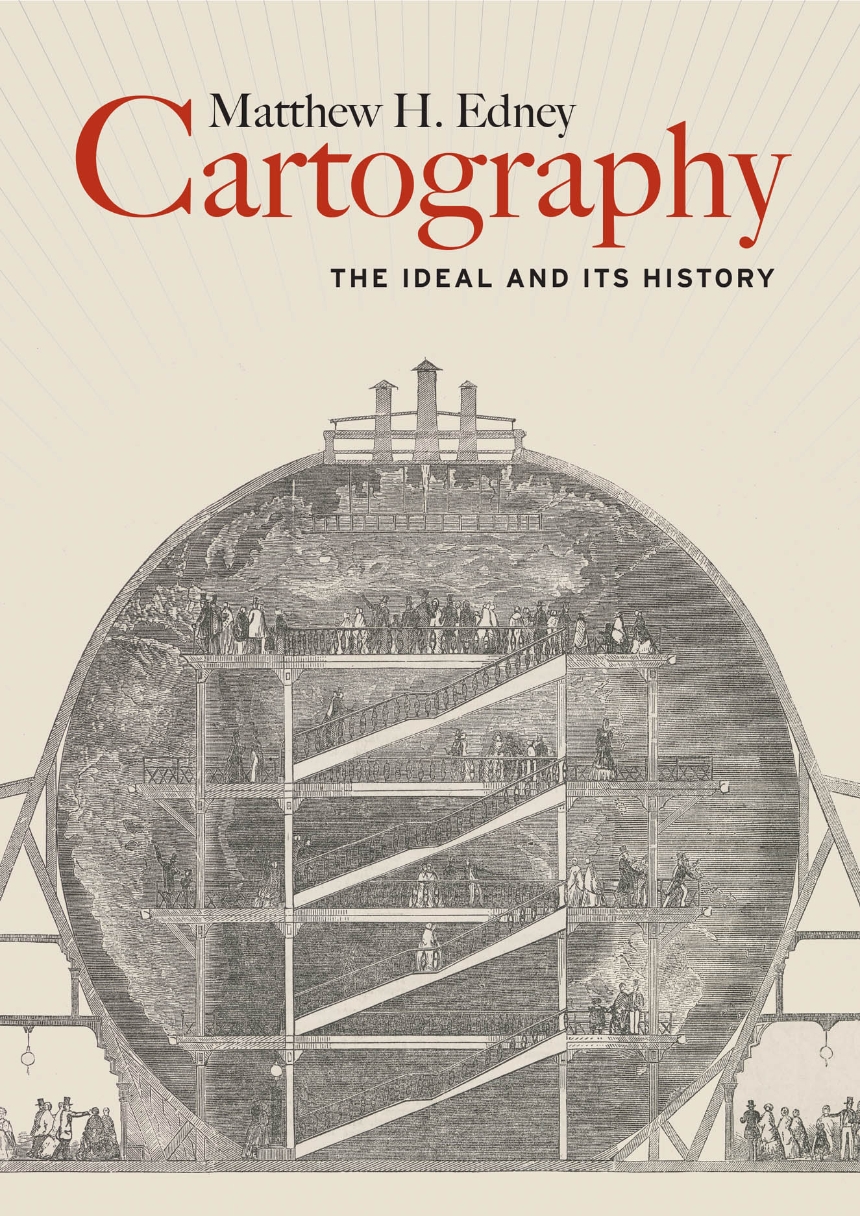Over the past four decades, the volumes published in the landmark History of Cartography series have both chronicled and encouraged scholarship about maps and mapping practices across time and space. As the current director of the project that has produced these volumes, Matthew H. Edney has a unique vantage point for understanding what “cartography” has come to mean and include.
In this book Edney disavows the term cartography, rejecting the notion that maps represent an undifferentiated category of objects for study. Rather than treating maps as a single, unified group, he argues, scholars need to take a processual approach that examines specific types of maps—sea charts versus thematic maps, for example—in the context of the unique circumstances of their production, circulation, and consumption. To illuminate this bold argument, Edney chronicles precisely how the ideal of cartography that has developed in the West since 1800 has gone astray. By exposing the flaws in this ideal, his book challenges everyone who studies maps and mapping practices to reexamine their approach to the topic. The study of cartography will never be the same.
In this book Edney disavows the term cartography, rejecting the notion that maps represent an undifferentiated category of objects for study. Rather than treating maps as a single, unified group, he argues, scholars need to take a processual approach that examines specific types of maps—sea charts versus thematic maps, for example—in the context of the unique circumstances of their production, circulation, and consumption. To illuminate this bold argument, Edney chronicles precisely how the ideal of cartography that has developed in the West since 1800 has gone astray. By exposing the flaws in this ideal, his book challenges everyone who studies maps and mapping practices to reexamine their approach to the topic. The study of cartography will never be the same.
Reviews
Table of Contents
Acknowledgments
Conventions Used in This Book
Conventions Used in This Book
1 Introducing the Ideal of Cartography
2 Seeing, and Seeing Past, the Ideal
Satire, Critique, and a Persistent Ideal
Breaking Free of the Ideal
Breaking Free of the Ideal
3 Cartography’s Idealized Preconceptions
Ontology
Pictorialness
Individuality
Materiality
Observation
Efficacy
Discipline
Publicity
Morality
A Singular and Universal Endeavor
Pictorialness
Individuality
Materiality
Observation
Efficacy
Discipline
Publicity
Morality
A Singular and Universal Endeavor
4 The Ideal of Cartography Emerges
Systematic Mapping
Mathematics and Rationality, Empires and States
Seeing the World
New Mapping Professions
Mass Mapping Literacy
Forging the Web
Mathematics and Rationality, Empires and States
Seeing the World
New Mapping Professions
Mass Mapping Literacy
Forging the Web
5 Map Scale and Cartography’s Idealized Geometry
Technical Points concerning the Numerical Ratio
The Geometries of Western Mapping
Projective Geometry, Numerical Ratios, and Map Scale
Numerical Ratios and Map Scale in the Twentieth Century
Map Resolution, Not Map Scale
The Geometries of Western Mapping
Projective Geometry, Numerical Ratios, and Map Scale
Numerical Ratios and Map Scale in the Twentieth Century
Map Resolution, Not Map Scale
6 Not Cartography, But Mapping
Bibliography
Index
